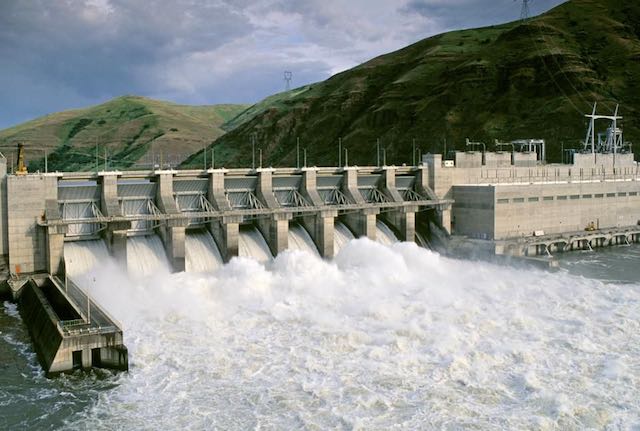forum
library
tutorial
contact

Breaching Dams
Won't Cool River Water
by John McKern
Walla Walla Union Bulletin, November 8, 2018
|
the film forum library tutorial contact |

|
Breaching Dams
by John McKern
|
 Recent articles in the Union-Bulletin discussed warming of Columbia River waters. It was suggested in the articles that water temperatures could be lowered by breaching four Lower Snake River dams. This is nonsense.
Recent articles in the Union-Bulletin discussed warming of Columbia River waters. It was suggested in the articles that water temperatures could be lowered by breaching four Lower Snake River dams. This is nonsense.
(bluefish notes: McKern's discussion concerns only the highest of four Lower Snake River dams. He conveniently ignores the fact that the slow moving reservoirs downstream are heat sinks, absorbing the sun's radiation and convection of hot air temperatures. A narrow river would absorb much less heat.)In the 1990s, environmentalists sued the Federal Power System Operators for this reason. Investigation revealed that the Lower Snake River reservoirs contributed very little to the warming problem. Gaging stations above Lower Granite Reservoir proved that waters up to 78 degrees were coming from Hells Canyon and up to 75 degrees from the Clearwater River.
More recently, the U.S. Army Corps of Engineers has released cool water from Dworshak Reservoir on the North Fork, Clearwater River such that water temperatures from Lewiston to the mouth of the Snake River rarely exceed 70 degrees and are held below 68 degrees as much as possible.
There two types of major reservoirs in the Snake River Basin, storage reservoirs and run-of-river reservoirs, plus myriad smaller reservoirs and diversions. Storage reservoirs capture winter floodwaters for release in summer for irrigation. Storage reservoirs typically have larger surface areas that gather heat from summer sun.
Irrigation return flows warmed when pumped out on the ground and flowing back to the river add to the problem. Dworshak Reservoir heats up in the summer, and the surface 10 to 20 feet may reach 75 degrees. Then there is a thin layer called a thermocline, and finally cold water below. Dworshak Reservoir is over 630 feet deep, and the temperature ranges from 50 degrees down to 40 degrees in the deepest part. It is this cooler water that is carefully discharged down the Clearwater to cool the Lower Snake.
The Lower Snake River reservoirs are run-of-river reservoirs. Water coming from upstream passes through each reservoir in three to five days, depending on flow levels. The reservoirs range from about 20-feet deep at the head to about 100-feet at the next dam. A study conducted by the state of Idaho provided thermal imaging that showed water from Hells Canyon, heated by upstream reservoirs and shallow tributaries, flows into Lower Granite Reservoir and rides over the cooler water from the Clearwater.
A towboat moving downstream showed a trail of cooler water stirred up by the passage of the barges and the towboat's propellers. Clearly this warm layer was persisting to the dam where it was mixed by the turbines.
learn more on topics covered in the film
see the video
read the script
learn the songs
discussion forum
